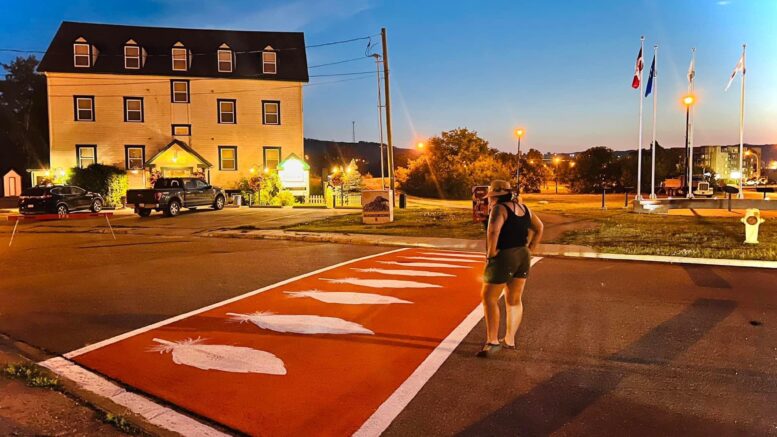By Laura Mushumanski
(ANNews) – Judy Ducharme learned from her grandparents how to sustain herself with a simple lifestyle and she came to understand why Indigenous people are so resourceful. Ducharme, the current Indigenous Engagement Coordinator with Egis Canada explained, “In the most educational way, one of the things that my grandmother taught me was: ‘You will never find a stupid Indigenous person.’ If you are ever lost, you will have food, shelter, water, and you will be warm [from the skills we learned from years of visiting and camping at her grandfather’s trapline]. I also had an uncle that would tell me, ‘Shit happens my girl, you will get through it’.”
Across the nation, everyone has been impacted by the history of Canada in relation to cultural genocide on Indigenous peoples. For Ducharme, she has come to know that “the more we share personal stories and experiences, the more we can understand the other side of the conversation and encourage teachable moments.”
Born and raised in the the first community of Alberta, Fort Vermillion with a predominant Metis population, Ducharme didn’t have any memories of being Indigenous or not, she just knew they existed as people and were not any different than others around her. It wasn’t until Ducharme was 15 that she and her family started to get involved in the Metis Nation of Alberta and the politics. That led to her sitting on a few committees with the Metis Nation of Alberta, and that is when she started to realize her own family history.
“I was raised with my grandparents who spoke Cree and English, and my great-grandmother only spoke Cree. My grandfather also had a trapline and there were many teachings I grew up [with] – very connected to the culture,” shared Ducharme as she reflected about why she spent so much time with her grandparents and participating in trapping, hunting, medicine picking, and learning beadwork.
It wasn’t until after Judy’s grandfather passed away that she found out there was a connection to Alexis Nakota Sioux Nation, leading her to want to explore familial connections. “It wasn’t until I became an adult that I found out my father was a residential school survivor. It wasn’t something that anyone talked about. My father suffered with alcoholism throughout my childhood years into my teenage years. We didn’t understand why he was the way he was. That he was battling internal strife. Growing up in a strict Catholic home and with a father who worked all week and was away on weekends, I think that’s why we spent so much time with my grandparents.”
Despite everything that was going on, at the age of 12, Ducharme started to develop an outlet that aided her spirit in good ways. “I started to draw and sketch and found out I had a real talent for it,” she explained. “Everyone has these things about them, for me, my go to was being a visual artist and being able to express myself in that way. I kept on with it, and as I got older, I would be asked to paint or draw things. I then started painting backdrops and murals for weddings and graduations, and tattoo designing. From there I started painting feature walls in people’s houses, as well as the tiniest of canvases on people’s nails.”
In 2021, when the 215 gravesites were revealed in Kamloops, Ducharme was taken by the news; that led to her wanting to bring this awareness closer to home. “I approached the Peace River Aboriginal Interagency Committee and said that I would really like to paint a crosswalk here in Peace River and asked if that would be something that they would support me with. They agreed. I painted an orange crosswalk with eight feathers to represent we are on Treaty 8.”
The site that was chosen for the crosswalk was symbolic. It was beside the memorial for the signing of Treaty 8, and a hotel that was the old St. Augustine Indian Residential School that had been brought upriver and converted into hotel suites.
In the morning of painting the crosswalk, Ducharme met with an Elder, said a prayer and smudged. “I was overwhelmed with emotions, unsure if I was able to do this, I just knew I needed to do this. I promised that the crosswalk would become a place of healing and respect. Because I honour my father, my uncle, and all the survivors and those that didn’t make it home.”
Ducharme has come to notice how each crosswalk that she has painted has made an impact in some way. Once she encountered hatred from a non-Indigenous person while preparing for the painting; this was when Judy realized that her paintings are educational and needed in our communities. “I thought people don’t want this or [to] hear about this,” she said. “Then I thought, no, this is why I do what I do. And why we provide education and keep talking and acknowledging and have Truth and Reconciliation. All these actions are all about engagement, education, communication and ultimately it is about healing. … I didn’t grow up with the true understanding of the history of residential schools and how it deeply impacted my upbringing. I now understand why it was the way it was. For future generations, my children and my grandchildren…there is healing.”
More of Judy Ducharme’s artwork can be found on her social media pages:
Facebook: Judy Lynn
Instagram: judylynn1975
LinkedIn: Judy (Jude) Ducharme



Be the first to comment on "Judy Ducharme communicates in Healing Ways – with crosswalks"